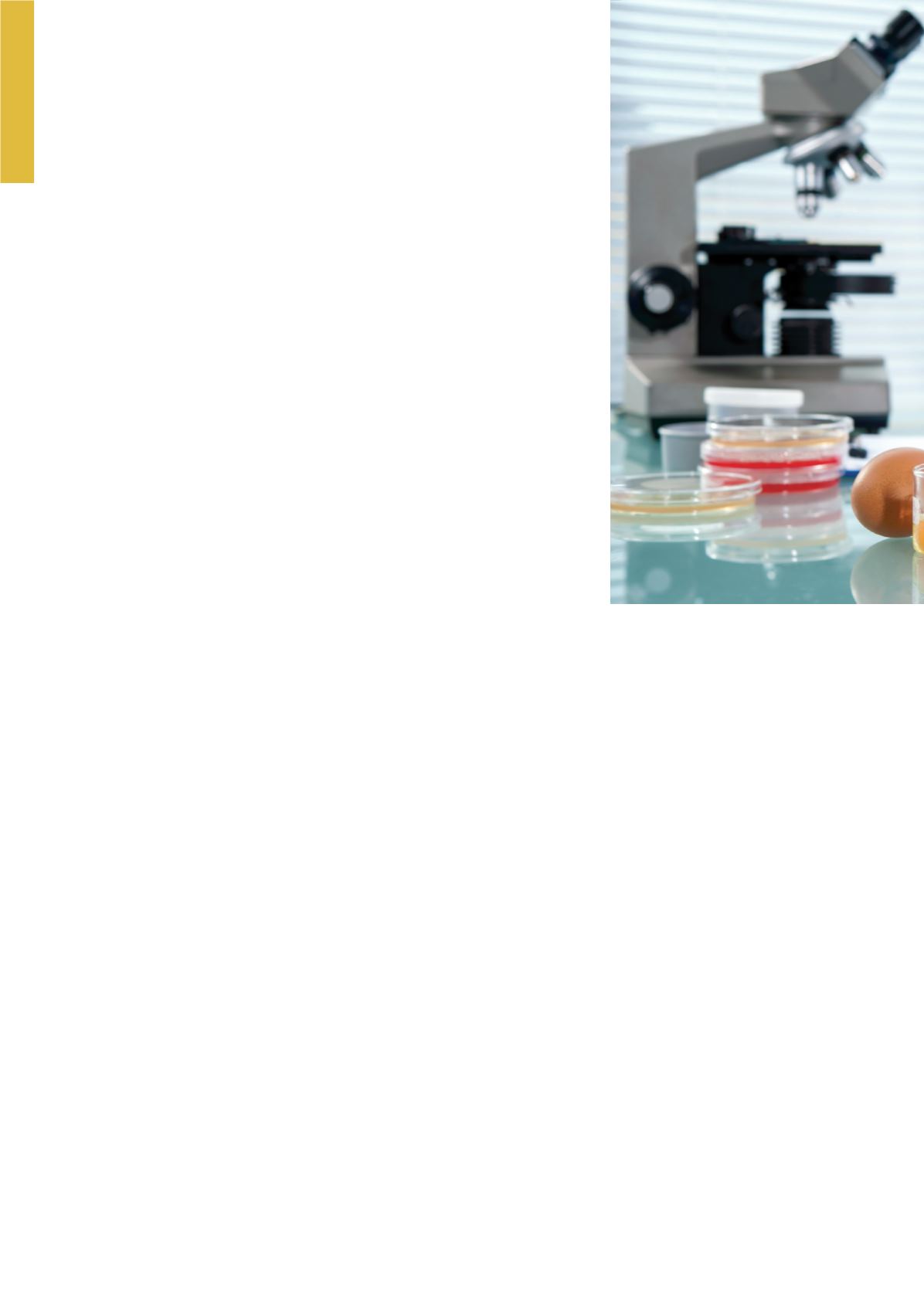

Food
poisoning
A few months ago, we were shocked with
news of the death of a young man and
the intoxication of more than 86 people,
seemingly from an intoxication after having
eaten a potato omelette in bad condition in
a restaurant during the carnivals in Cádiz.
We ask ourselves, how could this happen?
The incorrect handling of food can cause
health problems known as food poisoning,
a sickness resulting from food that is
contaminated with harmful germs and
their toxins. Generally it is not detectable:
the appearance, smell or flavour of food
does not change but it can cause mild
gastro-intestinal disorders. In some cases,
however, it can lead to serious diseases
(particularly in people who had been sick
previously, children, the elderly, people with
weakened immune systems.
Current prevention and control systems
in primary production as well as
transformation and marketing of food in
developed countries guarantee a high level
of protection for consumers. Nevertheless,
when there is a failure in one of the links
of this chain, food poisoning occurs.
Food poisoning is the result of eating
contaminated food. It is more frequent in
the summer months since heat facilitates
the multiplication of the micro-organisms
that produce infection and the formation of
toxins.
Most cases of food poisoning produce mild
gastroenteritis with a limited duration, a few
hours or days after eating contaminated
food, causing vomit, diarrhoea, stomach
pain such as cramps, and sometimes fever.
Micro-organisms involved
Straphylococcus aurous:
is
one of the most frequent causes of food
poisoning as a result of eating food,
particularly dairy products (cream, milk,
custards, pies,…) but also meat and fish,
that have been handled under poor hygienic
conditions and contaminated with germs
present in the nasal cavity of certain people
(asymptomatic carriers). This bacteria
multiplies rapidly at temperatures between
20 and 45ºC. The symptoms appear very
rapidly, from 2 to 8 hours after ingestion.
Salmonella:
There are various types
of salmonellas and each of them can cause
different disorders. The origin is the intestine
of animals, particularly poultry and pig and
men, contaminating raw food. These foods
can be vegetables, fruit, milk, dairy products
or shellfish that have been contaminated.
Flies can also carry the bacteria, infecting
food.
• Salmonellosisproducedby asalmonella
that contaminates domestic poultry,
eggs and derivatives (mayonnaise) and
non-pasteurised milk, as well as fruits
and vegetables that are in contact with
the soil. The symptoms are evident
between 12 hours and two days after
eating the contaminated food and
the symptoms are generally gastro-
intestinal disorders and fever.
• Typhoid fever: man is the only source
and, therefore, the infection is passed
from one person to another. In some
occasions, it produces systemic
disorders with fever, skin lesions,
affecting the liver, spleen, and
producing neuro-psychotic alterations.
• Paratyphoid fever, similar to the above,
but less frequent.
Listeria:
a very frequent diseases
which
often
goes
undiagnosed,
producing mild gastroenteritis, nausea
and diarrhoea. Sometimes it can spread
to the central nervous system and cause
meningoencephalitis. Caused by eating
raw meat and uncooked vegetables,
processed food contaminated during
the transformation process, such as soft
cheeses, cold cuts, or dairy products made
with non-pasteurised milk.
Norovirus:
very frequent in our
surroundings, it is spread from person to
person in closed and crowded environments.
Can also contaminate green-leaf vegetables,
fruits, and molluscs. The symptoms are
vomiting, diarrhoea, low fever, an overall
sense of fatigue. It is usually mild and
recovery takes 1 to 2 days.


















